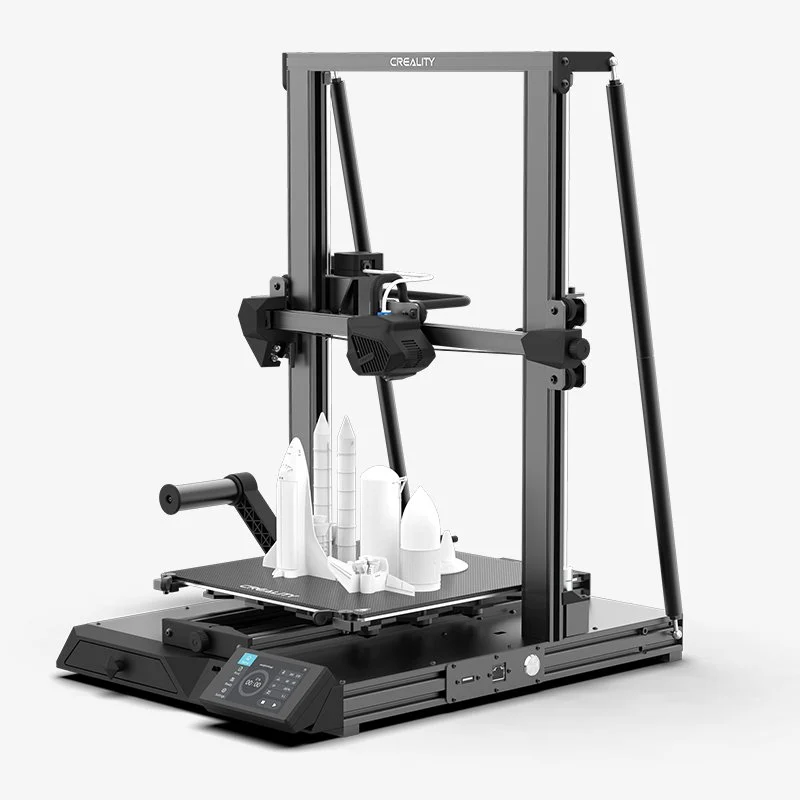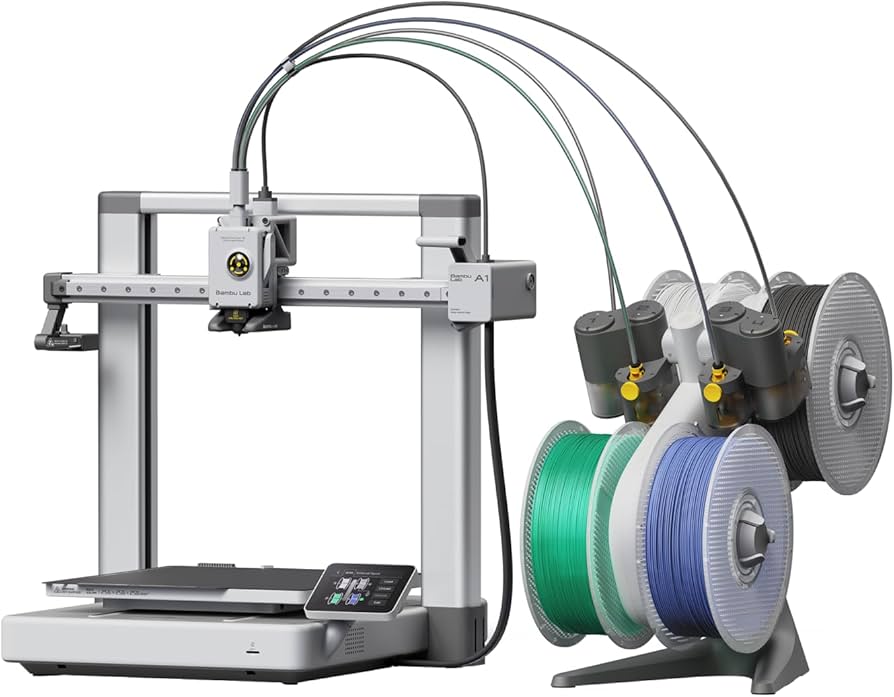Compare CR 10 Smart vs A1
Comparison between the best 3D printers
Choose the best 3D printer at the best price. The cheapest 3D printers are here.
Buy a 3D printer here with 3D Fila.
 |
 |
|
| Model | CR 10 Smart[BUY CR 10 Smart] |
A1[BUY A1] |
| Printing Material | Filament | Filament |
| Buy Filament for Creality 3D CR 10 Smart | Buy Filament forBambu Lab A1 | |
| Estimated price | $520,00 | $700,00 |
| Manufacturer | Creality 3D | Bambu Lab |
| Release Year | 2021 | 2023 |
| Print Volume [mm] | 300x300x400 | 256x256x256 |
| Printer Size [mm] | 578x522x648 | 385x410x430 |
| Weight [kg] | 14 | 8,3 |
| Power Loss Recovery | YES | YES |
| Enclosed printer | NO | NO |
| Bed Leveling | Automatic | Automatic |
| Filament End Sensor | YES | YES |
| Bed type | Heated | Heated |
| Power supply system | Bowden | Direct Drive |
| Standard nozzle | 0,4 | 0,4 |
| Maximum Nozzle Temperature [°C] | 260 | 300 |
| Maximum Bed Temperature [°C] | 100 | 100 |
| Maximum printing speed [mm/s] | 200 | 500 |
| Filament holder | YES | YES |
| Camera for supervision | NO | NO |
| Recommended filaments | PLA, PETG, Tritan, Flex, ABS | PLA, PETG, TPU, PVA |
| Recommended slicers | Cura, Simplify, Slic3r, IdeaMaker | SuperSlicer, PrusaSlicer, Cura, OrcaSlicer |
| Maximum Resolution [mm] | 0,1 | 0,1 |
| Processor | Processador ARM STM32F103 RET6 CPU | |
| Display | Display touchscreen 4,3'' | Touchscreen 3,5 |
| Power Supply | 110/220V / 350W | 350 W |
| Connectivity | SD / USB / Wi-Fi | Wi-Fi, Bambu-Bus, Cartão Micro SD |
| Operating systems | Windows, Mac, Linux | Windows, Linux, Macbook |
| Date of registration in the system | 2022-11-04 | 2024-07-17 |
| Release date | 2021 | 2023 |
| Extra features | The Creality CR-10 Smart stands out for its stability, with a dual Z axis and additional supports, minimizing oscillation in high prints. Its redesigned hotend offers better cooling, expanding the range of usable materials. The glass printing surface, with automatic leveling, facilitates the adhesion and removal of parts. Includes Wi-Fi / LAN connection and automatic shutdown after printing, adding convenience and efficiency. It features an effective single-gear extruder and an intuitive touchscreen interface, despite some firmware issues. | The BambuLab A1 printer features fully automatic calibration, multi-color printing with the AMS system, active flow rate compensation, quick nozzle change with a clip, active motor noise cancellation, a build volume of 256x256x256 mm³, a maximum extruder temperature of 300°C, and a heated bed of up to 100°C. In addition, it has high precision, a machine health management system and an intuitive 3.5-inch touchscreen interface. |
| Support for multiple colors and materials (AMS and CFS) | NO | YES |
Notes * |
||
| Cost-benefit | 6 / 10 | 7 / 10 |
| Hardware | 2 / 10 | 4.2 / 10 |
| Tela | . | . |
| Print volume | 4 / 10 | 4 / 10 |
| Performance | 2 / 10 | 4 / 10 |
| [BUY CR 10 Smart] | [BUY A1] |
Conclusion |
| In comparing the Creality CR-10 Smart and the Bambu Lab A1, several key differences highlight the strengths and weaknesses of each printer. The Creality CR-10 Smart, priced lower, offers a significant print volume, which can be particularly advantageous for larger projects. It features a stable design, good cooling capabilities, and a user-friendly interface. However, it lacks some of the advanced features found in the Bambu Lab A1, such as multi-color printing support and a higher maximum nozzle temperature, which may limit material compatibility and versatility. On the other hand, the Bambu Lab A1, while at a higher price point, prioritizes speed and precision, making it suitable for more demanding printing tasks. Its advanced features, including active flow rate compensation and efficient nozzle exchange, contribute to higher performance and greater ease of use for intricate designs. Additionally, it supports multi-color printing, which can be a game-changer for users seeking to expand their creative possibilities. Weight considerations also play a role, with the A1 being lighter and more compact, which could be beneficial for those with limited workspace or for transportability. In terms of overall cost-benefit evaluations, the CR-10 Smart scores slightly lower, reflecting the trade-offs between price and performance. Conversely, the Bambu Lab A1 offers a superior performance rating, justifying its higher investment for users prioritizing efficiency and technological advancement. Ultimately, the choice between the two printers depends on individual priorities — whether one values larger build volume and cost savings or seeks high-speed printing with enhanced features and versatility. |

